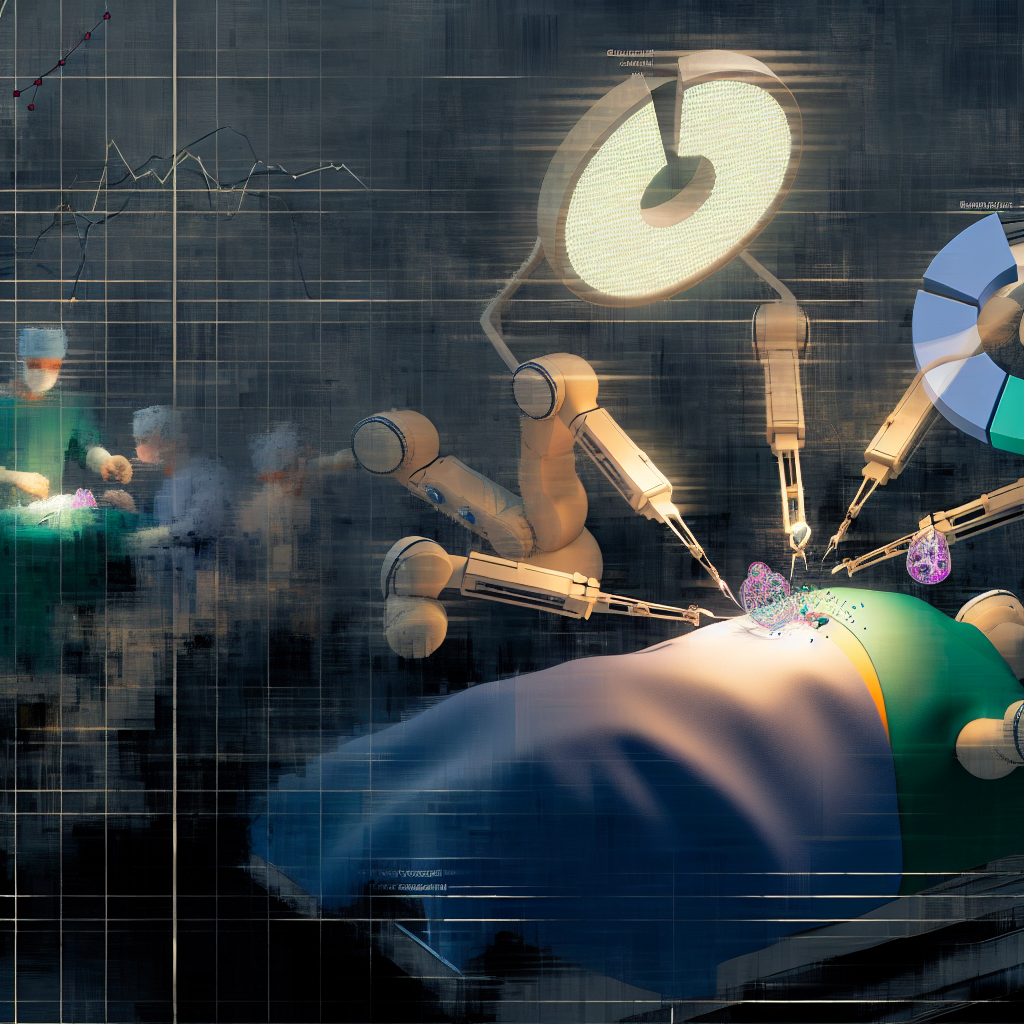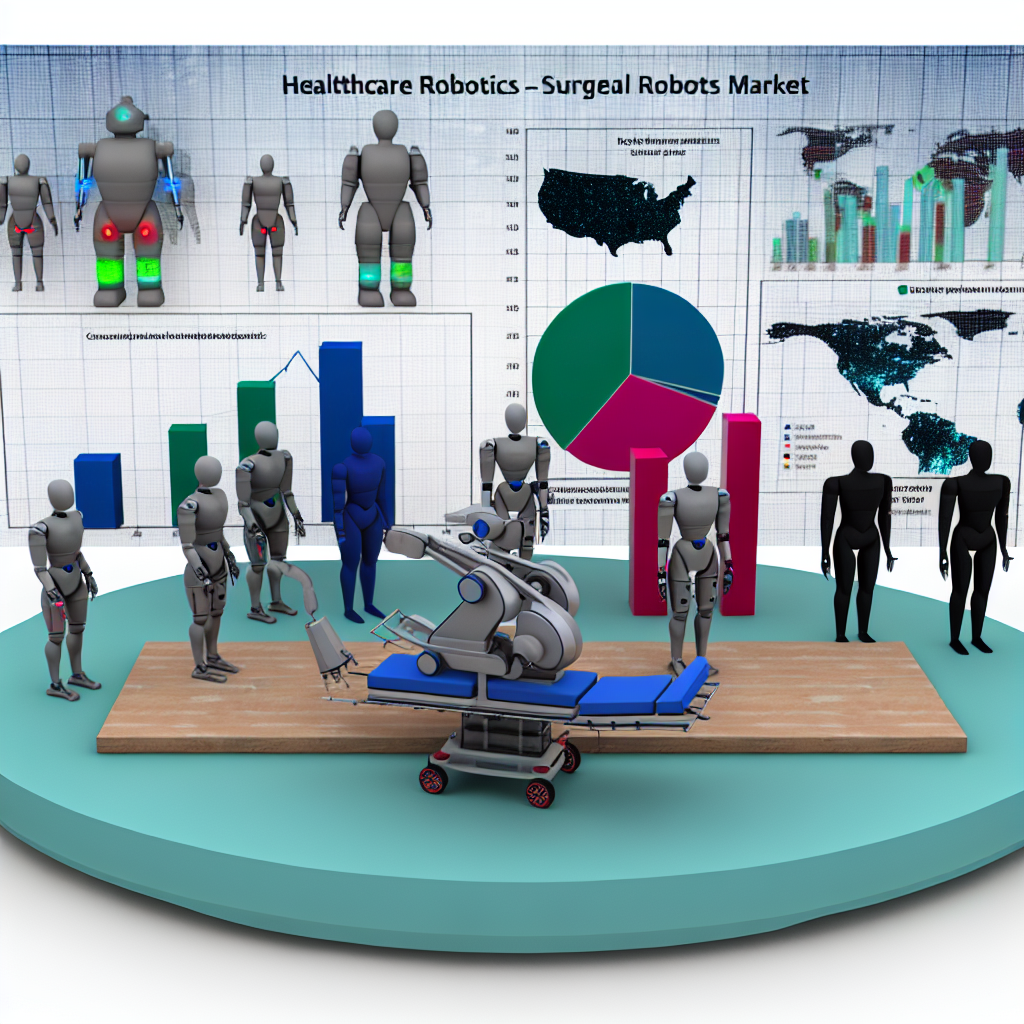Explore the latest trends in the Healthcare Robotics-Surgical Robots Market, including size, share, and forecasts for industry growth.
Healthcare Robotics-Surgical Robots Market Size, Share & Forecast

Table of Contents
- Healthcare Robotics: Surgical Robots Market Size, Share & Forecast
- Current Landscape of Surgical Robotics
- Market Size and Growth Projections
- Key Players in the Surgical Robots Market
- Technological Advancements Driving the Market
- Case Studies Highlighting Impact and Efficiency
- Challenges and Limitations
- Future Outlook and Trends
- Conclusion
Healthcare Robotics: Surgical Robots Market Size, Share & Forecast

The integration of robotics in healthcare has revolutionized the way surgical procedures are performed, offering unprecedented precision, reduced recovery times, and minimized surgical errors. This article delves into the burgeoning field of surgical robots, exploring the market size, share, and future forecasts. By examining current trends, technological advancements, and case studies, we provide a comprehensive overview of this dynamic industry.
Current Landscape of Surgical Robotics
Surgical robots are complex machines designed to assist surgeons in performing precise and minimally invasive surgeries. These robots are equipped with high-definition cameras and mechanical arms that can manipulate surgical instruments with accuracy surpassing human capabilities. The current landscape of surgical robotics is characterized by rapid growth and innovation, driven by the need for safer and more efficient surgical procedures.
Market Size and Growth Projections
The global market for surgical robots has witnessed substantial growth over the past decade. According to a report by Grand View Research, the global surgical robots market was valued at approximately USD 3.9 billion in 2018 and is expected to grow at a compound annual growth rate (CAGR) of 13.6% from 2019 to 2026. This growth is attributed to several factors including technological advancements, increasing adoption of minimally invasive surgeries, and growing healthcare expenditures.
Key Players in the Surgical Robots Market
Several key players dominate the surgical robots market, each contributing to technological advancements and increased adoption rates:
- Intuitive Surgical: Known for its da Vinci surgical systems, Intuitive Surgical is a leader in the market with systems installed in thousands of hospitals worldwide.
- Medtronic: Medtronic’s Mazor Robotics systems are renowned for their precision in spine and brain surgeries.
- Stryker: Stryker’s Mako robots specialize in orthopedic surgeries, particularly hip and knee replacements.
- Zimmer Biomet: Zimmer Biomet has made significant strides with its Rosa robots, which assist in knee and brain surgeries.
These companies are continuously innovating and expanding their product lines to cater to a broader range of surgical procedures and complexities.
Technological Advancements Driving the Market
Technological advancements are the backbone of the surgical robots market. Innovations such as 3D imaging, artificial intelligence (AI), and machine learning have enhanced the capabilities of surgical robots, making them more efficient and adaptable:
- 3D Imaging: Advanced imaging technologies provide surgeons with better visibility and precision during operations.
- Artificial Intelligence: AI integration allows surgical robots to learn from past surgeries, thereby improving their accuracy and efficiency over time.
- Remote Surgery: Technological improvements have enabled the possibility of remote surgeries, where surgeons can operate on patients from different geographical locations.
These advancements not only improve surgical outcomes but also reduce the risks associated with traditional surgical methods.
Case Studies Highlighting Impact and Efficiency
To illustrate the impact of surgical robots, consider the following case studies:
- Case Study 1: A hospital in New York implemented Intuitive Surgical’s da Vinci systems for abdominal surgeries and reported a 30% reduction in hospital stays and a 25% decrease in surgical complications.
- Case Study 2: A medical center in Germany used Stryker’s Mako robots for knee replacements and observed enhanced patient outcomes, including faster recovery times and improved precision of implant placements.
These case studies demonstrate not only the clinical benefits of surgical robots but also their economic advantages by reducing hospital stays and postoperative complications.
Challenges and Limitations
Despite the promising growth and technological advancements, the surgical robots market faces several challenges:
- High Costs: The initial investment for surgical robots can be prohibitively high, limiting their adoption in smaller or resource-constrained hospitals.
- Training and Integration: There is a significant learning curve associated with operating surgical robots, requiring extensive training for surgeons.
- Regulatory Hurdles: Surgical robots are subject to stringent regulatory approvals, which can impede their market entry and widespread adoption.
Addressing these challenges is crucial for the wider acceptance and implementation of surgical robotics in healthcare institutions worldwide.
Future Outlook and Trends
The future of surgical robots looks promising with several trends likely to shape the market:
- Miniaturization: The development of smaller, more flexible robots will allow for their use in a wider range of surgeries.
- Collaborative Robots: The next generation of surgical robots will likely feature enhanced collaboration capabilities, where robots and surgeons work more synergistically.
- Expansion in Emerging Markets: As economies in Asia and Africa grow, there will be increased demand for surgical robots in these regions.
These trends suggest a dynamic evolution of the surgical robots market, with ongoing improvements in technology and expanding applications in various surgical fields.
Conclusion
The surgical robots market is poised for significant growth, driven by continuous technological advancements and increasing demand for minimally invasive surgeries. While challenges such as high costs and regulatory hurdles persist, the benefits offered by surgical robots, such as enhanced precision and reduced recovery times, make them an invaluable asset in modern surgery. As the market continues to evolve, it is expected that surgical robots will become an integral part of healthcare systems around the world, ultimately improving surgical outcomes and patient care.
In conclusion, the future of surgical robots is not just about technological innovation but also about integration, accessibility, and collaboration, ensuring that the benefits of robotic-assisted surgeries reach a broader patient population.








